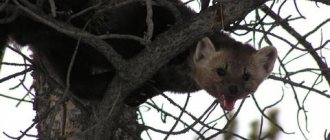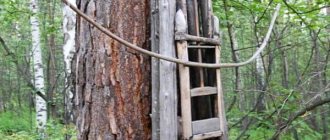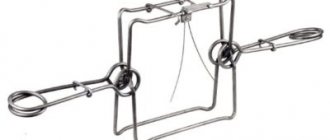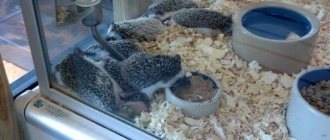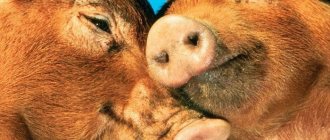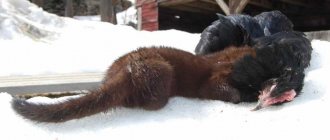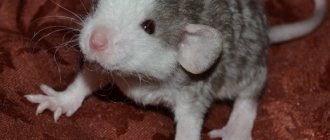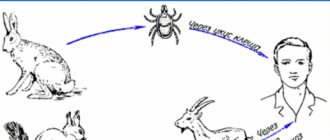general information
The marten is a tireless hunter.
In search of prey, she is able to travel up to ten kilometers during the night, catching literally everything that moves on her way: from mice and squirrels to birds, frogs and insects. Sometimes this animal even manages to grab a bunny, which is several times larger than itself. The fur of the marten is very beautiful and durable. And this is the reason that people have hunted it at all times. Hats and fur coats are sewn from its skins, and collars are made.
The pine marten prefers cluttered dark coniferous and mixed plantings. Although this animal is an excellent tree climber, jumping like a squirrel from branch to branch, it often prefers to move on the ground or in the snow.
What kind of animal is this?
The marten is a mammalian predator belonging to the mustelidae family. A fast, cunning and cautious beast. Thanks to its five-fingered paws with sharp claws, it easily overcomes obstacles and climbs trees, escaping from a hunter or confusing its tracks. The marten has a sharp muzzle with triangular ears framed by a light stripe. The color of the fur varies from chestnut to light brown, and there is a light throat spot on the neck. The length of the marten's fluffy tail can reach 25 centimeters, which is almost half the length of the animal's body. Life expectancy is 15-20 years.
In the European part of Russia, in addition to the pine marten, you can find the stone marten - the white-bellied marten. The wheatear can be distinguished by its white, and not yellow, like a forest species, throat spot. The fur of the white fox is tougher, vaguely reminiscent of the blue fox. The marten species can be easily identified by its tracks in the snow. The white lady leaves an imprint of each claw, the forest one is larger because of the fluff covering her paws.
During the daytime, the marten lies down in a bird's nest, hollow or squirrel nest. It goes hunting during the twilight and night periods. Prefers to catch squirrels, mouse-like rodents and small birds. He is not averse to eating bird eggs, snails, frogs, and will not refuse carrion. All these mustelid features should be taken into account for a successful hunt.
Hunting
Despite the fact that this is an energetic predatory animal, it nevertheless loves to feast on berries and is not averse to pampering itself with the larvae of wild bees and the “product” of their vital activity. Apparently, this is why catching martens with honey traps is very productive.
In general, this animal belongs to one of the most difficult objects to hunt. In those days, when uncontrolled marten fishing was carried out, its population in the European part of our country was reduced to almost zero. And this despite the fact that hunting this animal requires the highest endurance, hardening and professionalism. However, today such a “deplorable” situation has changed dramatically, the marten has become a common inhabitant of Russian forests, it has already been removed from the list of fur-bearing animals, the capture of which is subject to licensing.
What bait should I use at home?
What to do if a robber has entered the yard and is crushing poultry. There is only one way out - set a trap on the approach to the chicken coop and wait. It is important to choose the right bait for the animal. And it's not that simple. There can be no clear advice here. The marten is a finicky predator and does not catch everything. In this case, you will have to act empirically. For starters, you can try a universal bait. A poultry carcass is best suited for this. It’s better if it’s fragrant, the animal loves it when the meat begins to take hold, for him this is the best delicacy. Instead of chicken, rabbit is a good choice; its meat must also have some flavor.
Hunting with a dog
This animal is mainly nocturnal.
The most common are catching martens with traps and tracking with a husky in light snow conditions. When the hunter appears in the forest at dawn, most of the prey is already hiding in its shelters. If the marten went to her nest immediately before, then it will not be difficult for the dogs to pick up her trail and lead the person to her daytime place. However, the animal could lie down late at night, then it is very difficult for the husky to find it. Dogs have very little chance of discovering their day by chance.
Sometimes the marten fattens early in the morning or during the day. In this case, it is much easier for dogs to detect prey. Following a fresh trail, huskies drive the animal under dead wood, onto a tree or into a hollow. The dogs themselves are excitedly trying to get to the prey. Therefore, if she has taken refuge on the ground, they sometimes manage to strangle her or drag her out of the shelter alive. However, more often than not, catching a marten using this method ends with the person having to catch it from the shelter themselves using an ax or a strong stick.
Practice tracking a marten with huskies
The job of huskies is to detect the animal and bark at it until the hunter approaches. If the marten runs away, the dog must be able to chase it and not allow it to jump to the ground.
This video demonstrates not only the hunt itself, but also the training of young dogs who are just learning to correctly find and monitor a marten.
If you do not yet know the basics of successfully preparing a husky for this hunt, then I recommend that you watch this video, where hunters do not strive to quickly get a trophy. They do everything to make the dogs do more work on the animals.
Trailing
In winter, when the forest is covered with snow, many people prefer to hunt without a dog. At this time, the marten is unable to walk “on horseback” in the trees for a long time and therefore is forced to descend to the ground. In this case, tracking is best done on fresh powder. Finding traces, the hunter, following them, reaches the animal’s den. This type of marten fishing is not difficult. It is known that prey, as a rule, does not confuse its tracks.
Tips for setting a trap
When installing a trap you need to be extremely careful. This is especially true when the gate is being adjusted. The spring must be turned in the opposite direction from the marten's approach. The trap is carefully camouflaged. It is important to secure the trap firmly. Otherwise, the marten will run away, dragging it along with it. For fastening, use a chain or steel cable. Since an animal can easily chew through an ordinary rope and break the wire. It is convenient to tie bait to the wire.
Samolov can be placed on a tree using a perch. To do this, the perch is nailed directly to the tree at a height of up to two meters. The trap is at its end. The selected bait is attached to it from below. The predator dies in the air, between the slammed arcs.
If you set a trap in the snow, the animal’s paws may suffer. The animal may lose a paw and run away. Before dying, the marten suffers painfully, trying to free itself. It can be eaten by other animals such as foxes and wild boars. The bait itself on the ground is quickly eaten by rodents and other forest animals.
All approaches to the trap must be carefully hidden. Since the predator is brave and fearless, the trap itself does not need to be camouflaged.
Sweep
Towards the end of winter, this representative of the Kunya family prefers to make shelters in the snow: these can be places under dead wood, under the roots of trees or stumps. At this time, it is common to catch martens with a trap or using a net - a thin but strong net with a cell measuring about three centimeters in size. Along the lower and upper edges of such tackle there are strong rebounds.
Hunters surround the ground shelters of martens with blankets, hanging them on stakes located obliquely and with the top inclined to the outside. In this case, the lower edges of the net are trampled into the snow. The canvas must be hung freely. Therefore, prey caught in such a net ends up as if in a bag.
Fishing methods
If the weasel has already visited the chicken coop once, you need to take drastic measures. To combat the pest, you can use one of the methods suggested below.
Important! Representatives of the mustelid family are repelled by strong smells and loud sounds. This feature must be used to protect poultry from weasels.
Repellers
You can get rid of weasels using different methods. First, you should try special repellers.
- Electronic products. The operating principle of such mechanisms is based on the production of low-frequency sounds that the human ear cannot perceive. They also do not cause harm to health. But the weasels are panicked by these sounds and run away.
- Flashlight with motion sensor. When an animal approaches, such a device reacts to the slightest movement by turning on bright lighting and emitting a sound signal. This scares Laska and she runs away.
Catching a marten with a trap
This species is considered the most common, especially in the eastern regions of our country. Catching martens with traps can be done in several ways. Moreover, they all involve the use of edible odorous baits. Most often, catching martens with traps is successful with fermented meat - the carcass of a squirrel, bird or some other rodent. The bait needs to be slightly salted so that it does not freeze too much. This animal is caught quite well on pieces of honeycomb and on rags that are well soaked in honey.
To determine the location of future hunting, you need to survey the territory in advance. It’s good to do this before the opening of the season by pre-baiting. If the location has already been determined, and martens, accustomed to finding food there, have become frequent guests there, then you can directly place the prepared traps.
If a hunter enters the territory for the first time through the snow, then the ability to “read” the traces of his prey will be useful.
Where to set the trap
Preparing the right bait with a terrible smell is only half the battle. Now the most important thing is to determine where to place the trap. After all, it is important that the animals get into it. Choosing a feeding spot is not an easy task. Traps are placed at the intersection of paths, in narrow places, and in the upper reaches of a ravine. They can be successfully placed in passages through springs and streams. A good place is an aspen forest with hollow trees. Here you need to show observation and ingenuity, notice the places where there is animal droppings. Droppings on trees are a clear sign of the presence of young animals. If you're lucky, you can spy where martens like to jump from trees. If the jumping site is found correctly, the marten will soon end up in a trap.
Preliminary reconnaissance
You must first determine the approximate area where the animals may be.
Most often this is a coniferous or mixed forest. The hunter also needs to check the presence of old trees with hollows on the site. This is very important because martens love to rest in them. In their absence, the animal settles in the tangles of fallen trees. When the hunter decides on the territory, he just has to figure out what to lure his prey with. The entrails of animals are also good as bait; they need to be kept warm for several days so that their smell intensifies. Bird feathers can either be added to the bait, or scattered nearby.
Required tools and materials
When making a spring bag with your own hands, there is no need to prepare powerful logs and thick branches, as in traps for large animals or the above types of self-catchers for martens. All that is required from materials is 4 cutting boards for the sides (about 30 by 10 cm each) and a thick steel wire of 3-4 mm (for the spring mechanism and the grid in the back of the bag).
Tools you will need:
- ruler;
- saw;
- drill;
- nails or screws.
Which trap to set?
If traditional hunting, carried out with a gun, requires the mandatory presence of a person, then the use of this device can be considered a passive method of obtaining the treasured trophy. But catching martens with traps requires special skills, knowledge of the topography of the area, the habits of the animal, its feeding and sleeping places.
These devices are most often used for hunting small prey. Therefore, catching martens with traps is carried out with the second or third number. Although experienced hunters know: if the trap needs to be suspended, then zero or first will do.
Recently, catching martens with KP 120 traps has become widespread. These are pass-through traps that weigh a little more than half a kilogram. They are installed as follows: the springs are rotated so that they are outside the frames, then they are compressed and secured with a safety hook.
Hunting season and trap setting
the marten hunting season to begin from late November to early March. At other times, hunting is not carried out due to the ban. And there’s really no point in hunting down a shedding animal, which is no longer so fluffy and valuable. By winter, martens grow long fur.
Therefore, the marten becomes a valuable trophy for any hunter. You can sew a warm and beautiful fur coat from the skin. The fur of Russian martens is considered the best in the world and therefore the obtained skins can be sold without any problems. Most often, martens are caught using various traps.
To install them, you need to have the necessary knowledge about the marten’s habitat and its habits. A cunning and intelligent animal is not so easy to trap. But hunting with husky and tracking is considered the most exciting and exciting. They often go on such hunts at night.
Only patient hunters hunt marten. After all, you will have to feed the future winter hunting area for many autumn days, regardless of the hunting method. In order not to come home empty-handed, you will need to find the animals’ habitat.
With the onset of winter, snares and traps are placed in a well-fed place near trees with large hollows, at the crossings of forest streams and rivulets. In winter, martens will definitely visit the place that was their free autumn canteen. It’s also worth going fishing with a dog or tracking an animal with a gun.
The marten is a forest dweller, prefers to live in dense thickets
Principle of operation
Catching martens with traps occurs as follows: these iron devices, which slam shut when the spring is activated, press the body of the prey caught in them.
As a rule, two types of traps are used for this small animal: frame or plate. Sometimes hunters use numerous versions of self-catching traps - bags that can be installed both on a tree and on the ground.
The operating principle of this design is to capture prey. When the marten sticks its head into its frame to pull the bait from the guardhouse, the frame on the animal’s neck slams shut. Kulema is usually placed in a box so that the bait is not stolen by birds and other small forest inhabitants. This trap is not covered with snow, in addition, it works in any weather, whereas ordinary traps may not slam shut in the frost that sets in after a thaw.
Option for installing a bag
The spring plane can also be installed horizontally, but not on fallen trees and stumps, but between standing trees.
For such an installation, 2 poles are packed between closely growing trees. The distance between the poles should not prevent the spring from moving freely.
The bag is installed with the spring down.
If the spring is placed on top, then a bag falling from a tree, snowfall or strong wind will cause the trap to work idle. Also, a marten or another animal, the same bird can disturb the bag. When installing the spring from below, all this is eliminated.
Horizontal bags have a board nailed to the bottom to prevent the marten from snatching the bait; vertical bags do not have a bottom, since their bottom is adjacent to the trunk. For the convenience of placing the bait, a door is made of mesh; closes with soft wire.
There are also two ways to secure the bag to the poles:
- Along the poles;
- Across the poles.
The sticks are attached to the side where the spring is.
Where is the best place to set traps?
Today, it is very common for hunters to catch martens with traps. Many hunters post photos of their trophies on the Internet, boasting about the trophies they caught. But if you don’t know the right places to set traps, it will hardly be possible to catch prey.
You can set traps almost anywhere, the main thing is that the animal appears there often. The best places among experienced hunters are considered to be the tops of ravines, intersections of forest paths, sloping slopes and areas between old trees.
Making a bag with your own hands
It is better to start the manufacturing process with springs. You will need wire No. 4, which should be cut. Next, we measure a length of 16 cm on 2 rods and set the width ="770″ height="441″[/img]
Holding the wire in a vice, bend the spring with a knob.
A similar operation is performed with the second rod. As a result, you should get 2 identical springs, in which one arm is 14 cm and the other is 16 cm.
Immediately, 2 more rods of 12 cm each are cut out. To simplify the work and to make it easier to fix the frames, a device is made from 2 planks. Grooves are cut into the boards and the structure is fastened with a bolt.
The springs are set at the same distance to the ends of which the previously cut rods are grabbed. The spring frame is ready.
Next we make the box itself. You will need a board on which we outline the required dimensions of 31x17 cm and cut out the part.
Mark 4 cm from the edge and draw a line.
We retreat 2 cm from the edges.
and put marks on the line.
We step back 1 cm above the line and below it and also put marks.
Next, you will need a screwdriver and a 10-point pen. You should drill 2 holes in the places marked on both sides of the line.
Then we retreat 19 cm from the line - there will be a guardhouse.
We make a mark strictly in the middle. Stepping up and down 1 cm, we also make an oval hole.
We draw another line, 7 cm away from the edge.
The bottom of the frame will be placed here.
The frame itself is secured using a plate and self-tapping screws.
Pressure frame and alertness
It is made from softer wire than the frame. Cut a piece of wire, taking into account 19 cm on the sides and 12 cm in the middle of the frame.
They bend it in a vice.
The height of the frame itself should be 15 cm, and the rest of the section is bent in a vice and then with pliers to make loops.
The frame is threaded from the bottom of the bag cover through the cut holes and placed on the spring.
We retreat 2 cm from the edge of the lid and mark the middle - this is where the guard will be located. A part is bent from the wire to which the guard itself will cling.
It is made from the same wire as the frame and bent with pliers. The hinge is attached to the lid with self-tapping screws.
Set up a guard and a guardhouse.
Next, screw the side and back walls. The trap is ready.
Lures
The marten just never approaches the traps. Hunters definitely have to set bait. As a rule, catching martens with bait traps is the most catchy. Fish or rotten meat, which emits a pungent odor, is used as bait. You can also take carcasses of small rodent animals, for example, squirrels, muskrats or small birds.
The marten bait must be tied in such a way that it hangs down and is not noticed by flying birds. And under the bait, at a distance of up to thirty centimeters, you need to “charge” the trap.
The marten is literally “led” to the smells of essential oils. Therefore, many hunters spray this odorous liquid at a distance of five to six meters from the traps. But you need to be careful and not overdo it, otherwise the prey may be scared off by a too strong smell.
Experienced hunters, for whom catching martens with traps - trapping - has long become a common practice, use anise oil, as well as tincture of valerian or iodoform.
Installing a finished trap
Installing the finished device is very simple. Its body is fixed to the tree vertically and high enough from the ground to prevent foxes or wolves from falling into a trap. At the same time, all mustelids are excellent tree climbers, and getting along the trunk to the trap to stick its head into the bag and grab the bait is a matter of a few seconds for the marten.
At the same time, the guard will become alert, and the crusher will forcefully press the animal’s neck to the front wall. At the same time, you don’t have to worry about the performance of the bag - the design and location will not allow it to be covered with snow, and a sharp drop in temperature will not affect the case, which is dry from the inside.
Photo gallery: Installing the bag at height
Bag made from improvised means Bag with a ladder Bag for marten in winter Bag at a height of 2 meters Disguised bag
The bait for fishing can be very diverse. It is believed that pieces of upland game - nutcrackers, jays, hazel grouse or partridge - are best suited, although you can replace them with any other meat or fish. At the same time, experienced hunters also use much simpler baits - making sure that their smell is attractive to the marten. For this purpose, diluted beaver stream, mink anal gland infused with fish oil, and even ordinary bread soaked in honey are used. They say that the marten responds well to dry cat food - Whiskas or any other.
How to set a trap
The trap must be attached to some strong and immovable object or structure, otherwise, while waiting for prey, it may suffer a sad fate: some large bird can easily grab the trap and drag it away with it.
There are often cases when, instead of the treasured marten, other animals come running to the smell of bait. That is why it is better to install traps at the height of human height, and the bait - approximately thirty centimeters from it. Many hunters construct a canopy of spruce branches over their “charged” traps.
Catching martens with traps is carried out near trees. They can also be installed in the hollow of a fallen trunk. The bait is placed deep, and the trap is placed at the entrance. If there is no hollow in the tree, then hunters often cut it out themselves with an ax.
Night fishing for marten
Every hunter knows perfectly well about the night habits of the marten. During the daytime, the marten hides in hollows and goes out hunting at night. Therefore, many fishermen hunt this predator at night. They take with them a hunting dog, a husky, or bypass the mustelids' possession by tracking.
Night hunting for marten gives even more thrills than daytime forays into the taiga. Usually during the day they catch martens only with various traps, such as a bag or a trap. And they engage in active hunting in the dark. At this time the taiga is even more beautiful. Your assistant will be a flashlight, illuminating the path and pointing to the tracks.
When hunting at night, you should be especially well insulated. You definitely can’t do without a warm hat, mittens and felt boots. You need to walk slowly through the forest so as not to run into sharp branches on which you can fall face down. When hunting marten, you should not be greedy.
Take from nature only what you need, leaving the riches of the forest for future generations. Do not use poaching fishing methods. Buy good equipment for a successful hunt. And then the hunting process will give only the most vivid sensations and wonderful trophies.
Fishing Features
Traps should not emit a metal smell, this will scare away the animal. It is better to boil them and rub them with the pine needles of some tree.
Often inexperienced hunters make a mistake when leaving traps on the ground. The fact is that martens that fall into a trap run away with it, removing their paws from there. In addition, traps located on the ground cause other forest animals to spoil the skin of the prey caught in them. As a rule, rodents do this.
Catching martens with traps is very common among professional hunters today. And this is not surprising: after all, they can catch two or three “skins” at once, especially if the place is prepared in advance and the prey is fed.
During the cold winter months, you don't need to check your traps too often; just walk around them once a week. Whereas during the thaw, this needs to be done more often so that decomposition does not spoil the skin.
Preparing to hunt martens
Like any serious business, marten fishing requires careful preparation. To determine the type and number of self-catchers, it is necessary to study the fishing area. A hunting path is being laid on the site. It should run along areas frequented by the chicken.
The site administration reminds you that in accordance with the current legislation of the Russian Federation, the use of standard leg-grabbing retention traps with steel arches for catching pine martens is prohibited! The published material is for informational purposes only and does not encourage readers to catch martens using prohibited methods!
Such places include:
• areas of old forest where there are many fallen trees; • areas of forest where there are bird nests. The marten regularly visits all nests, and birds often sleep there at night. And the predator herself doesn’t mind staying for a day in a cozy bird’s nest; • forest ravines; • forest streams and small rivers, they attract martens like a magnet, there is always something to eat; • rocks and large stone boulders.
In such areas, places for installing self-catchers are prepared in advance. In the fall, bait is laid in these places so that the marten gets used to the place. She thinks that in this place it is safe to eat. The marten does not yet know what kind of reinforcement this is; she will have to pay with her own skin. Preparatory activities include preparing and checking traps and bags.
The agile predator is not afraid of the smell of metal. Therefore, the trap does not require special treatment. It is enough to remove grease and dirt from it. Attention should be paid to attaching the trap, the reliability of the leash and fine-tuning the alert mechanism.
What does a beech marten look like? How to recognize it?
The fur color of the beech marten can vary from dark brown to gray. A characteristic feature is the stripe on the marten's neck, reminiscent of a white tie, which stretches to the chest. However, there are exceptions when the marten does not have this special sign.
Martens do not have hair on the soles of their feet, and the softness of the pads makes the animal move very quietly. The marten is similar in size to a cat, but slimmer. The beech marten is about 50 cm long (without tail).
An interesting fact is that the beech marten can jump up to 3 meters. In addition, she is an excellent climber, so the gap in the roof is enough for the marten to settle in the attic. She has very sharp teeth and strong paws.
Use of pets
If a ferret has already gotten into the habit of entering your chicken coop, then, sadly, the animal must be caught.
Pets - cats, dogs - help many farmers by protecting chicken coops from ferrets. They scare away predators, making it difficult to calmly hunt the bird.
The ferret is an active, cautious animal, so it is difficult to catch the enemy of poultry birds, but some pets are valuable hunters. Agile dogs and cats are capable of unexpectedly grabbing and crushing a ferret, weasel, or marten.
Important! Pets that hunt predators must be vaccinated against rabies.
Ferrets and other breeds of domestic ferrets are useful to farmers. They catch rodents by driving wild polecats out of their territory. Well-fed pets do not hunt birds. You should not allow tame ferrets only to the chicks: the chicks will turn out to be a toy for hunting and entertainment.
